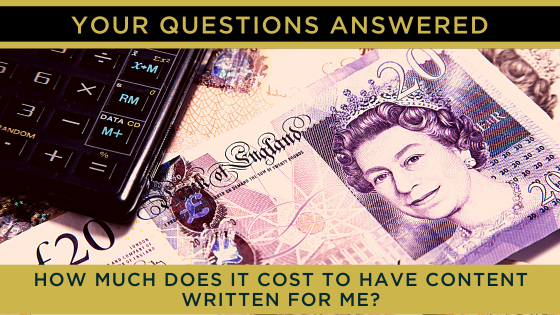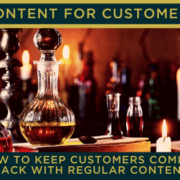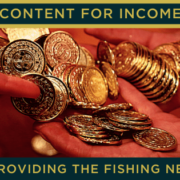How much does it cost to have content written for me?
If you are considering using a writer to create content for you, knowing how much it will cost is a natural question to ask. After all, any business has to keep an eye on the pennies and being able to budget for the services you outsource is crucial.
While we can give ball-park figures for some of the most common services, each writing project is different. Since we pride ourselves on creating bespoke content, there isn’t a simple rate card you can use to work out the costs. In the end, writing is a time-based service, so there is an hourly rate which sits behind what we do but it isn’t just a case of sitting at a keyboard and tapping out the words. There is more involved and a number of variables that have to be considered.
To help you understand, let’s break down the content writing process Creative Words have adopted, to help you understand what you are paying for and the value it adds.
Step 1 – Understanding you and your business
Before a word can be written, we need to know about your business and, most importantly, the audience we are writing for. We might ask you questions like: Who is your audience? What matters to them? Why might they be seeking you out? What action and reaction do you want?
The level of detail we’d need to go into depends on how we are helping you. We might be able to gather everything we need to write a single page of a website in one session. For something more complex, like a webinar funnel, it would take more time.
There are two outputs of this stage:
- the creative brief which documents everything we need to know to create your content
- a costing based on our understanding of what is needed and experience of how long things take.
Step 2 – Research
We might need to do some research to support the content we are creating. That might include interviewing a technical expert or members of your team, internet research on a topic or keyword research if you need content to be SEO optimised.
The time involved is highly variable depending on what is needed. It might take an hour, if you have provided all the information and all we need to do is read it, or it might take several hours to track down relevant documents and find the data we need.
Step 3 – First draft
With the creative brief as the basis and drawing on the research, we now write a first draft. Now, here’s a funny thing about writing – while you might think we could simply say ‘x words per minute’ and use that for costing, there isn’t a straight line to estimate how long something takes based on the number of words involved.
For example, 500 words will take around 100 minutes to create a first draft (roughly). But 250 words doesn’t take 50 minutes – even though you’d think half the words would take half the time. It would actually take more like 75 minutes. That’s because getting a message across succinctly takes more time to think it out as you play around with words and phrases to get the piece down to fewer words. So, the more words there are, the faster the writing rate – up to a point. Even if we are writing a long piece and in a real groove, we’d not get much more than around 500 words written in an hour.
Step 4 – editing
Now an editor will review the first draft to be sure it fits the brief and reads correctly. This stage ensures you get really top quality content from our team. This is more of a ‘straight line’ – roughly 1000 words an hour for editing content that’s come from one of our writing team. If references need to be cross-checked, that might add a little extra time but that’s only needed in certain circumstances.
Step 5 – client feedback
You might have feedback on what we’ve written, especially in the early stages of us working together. We tend to ‘tune in’ to the clients we work with on an ongoing basis, so the time needed can change over time. At this stage we might perhaps need to work on getting the tone exactly right or you want something phrased a little differently. So, we make final changes based on your feedback.
Step 6 – setup
One of the things that makes us unique is that we can also take care of setup for you. So, we’ll build the blog post, or set up the newsletter, or add the content to your online training course. We’ll find the images that match it and, if needed, size them correctly and add titles.
Step 7 – in-situ checks
If you’ve already got someone taking care of your website, or a designer creating your brochure, we might just hand over the content to them to set up. But that’s not the end of our involvement. We’ll always check that the content looks right in situ. What we look for is content fitting the space designed for it, and the images being used referenced correctly with the text. And, if the end product is going to be printed, we’ll get our proofreader to give it a final once over.
So, what does that all mean in terms of cost?
By now you’ll be beginning to see that there are lots of factors that have to be considered in pricing our services, so there is no simple answer. But here are some recent quotes we’ve given that might help you get an idea of costs.
Four pages of content for a website – one of 750 and three of 350 words and without any setup: £650
Designing, writing and building a sales funnel – landing pages, four emails to promote it and four follow up emails for registrants: £1100
Pages of content for a website plus team profiles – one page of 750, two shorter pages, short text for other pages and the gathering and editing of the team profiles: £650
Copy for a brochure – 12 page, A5 booklet describing services, with around 40% images: £700
Want to know more or find out what your project might cost? Get in touch to arrange a time to talk.












Leave a Reply
Want to join the discussion?Feel free to contribute!